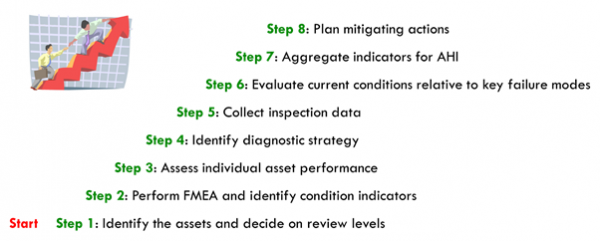Cigre Australia
empowering
networking
global know-how
WG B3.48 Asset Health Indices for Equipment in Existing Substations
Working group B3.48 has produced Technical Brochure 858 to describe a process to classify a wide range of substation assets in terms of their changing likelihood of having an in-service failure. This was achieved by producing guidelines for companies to build credible Asset Health Indices (AHIs). The Australian member on this WG was Michael Verrier.
The work is directly relevant to Australia and New Zealand. Adopting a condition-based asset management plan which includes an AHI component, provides an informed, knowledgeable and defendable outcome for achieving whole of life service from relevant assets, providing prudent CAPEX and OPEX financial control.
The AHIs can firstly be used to create asset specific plans for maintenance, refurbishment and asset replacement. Secondly, they can provide resilience information on a functional basis through a network.
The AHI PROCESS can be represented as several steps in an asset evaluation to determine an asset’s health and its time frame and likelihood of continued service.

Satisfactory and reliable performance of substation equipment is critical for any utility company. During their service-life, assets transition from new to those with one or more developing failure modes. There is a need to have the capability to identify the time frames for these transition stages as age by itself, or time in service, is a poor proxy. More appropriate is the link to the onset of failure modes and an appreciation of the factors causing the rates of change in condition. This range of “failure-free periods” and consequential failure mechanisms requires a different management practice from one that follows a simple time-based assignment applied to the whole asset class. One way of managing the assets is by using condition assessment, provided that it can be linked to the range of failure modes that occur.
This AHI process is used to identify when to intervene with maintenance, refurbishment or replacement. It creates a focus on estimates of a “failure-free” period for each asset. It all begins when the asset is newly commissioned, and it has ongoing revisions as the years in service pass. In many situations, these estimates can be based on periodic condition assessments.
Key points include:
- The AHI approach is applicable where there is a link through condition indicators to the symptoms of failure modes and the timescales for the transition of an asset between being sound to one being likely to cause an in-service failure.
- Any AHI process should follow an asset through its life by identifying changing likelihoods of failure with their associated time periods and so creating an action plan for an intervention of maintenance, repair, or replacement.
- The resulting set of AHIs should be calibrated for time: the AHI must uniformly reflect the same urgency of intervention. All assets with the same score should have the same timescale for intervention, irrespective of failure mode or asset type.
- A ‘poorer’ AHI should always reflect a more urgent condition.
- The AHI methodology can be used at component, asset, bay and substation level, incorporating a wide variety of asset types and for a range of outcomes, maintenance and replacement planning.
- An AHI is a list or display of assets that are prioritised in terms of the estimated likelihood of failure within a given period, unless some form of intervention is taken.
- An AHI is not an asset risk assessment as it doesn’t consider the consequences of failure.
- The AHI list can be configured for only one asset type in the company to prioritise actions, or substation-wide for risk and network management.
- The estimated likelihood is based upon there being a link between relevant performance, failure modes and condition criteria.
- It is part of a wider strategic asset management plan, to assist management of assets, their maintenance/ refurbishment/ replacement decisions.
- It needs to provide an ‘answer’, which is justifiable and auditable to stakeholders.
Technical Brochure 858, is available from e-cigre - free for members and 300€ for non-members.
